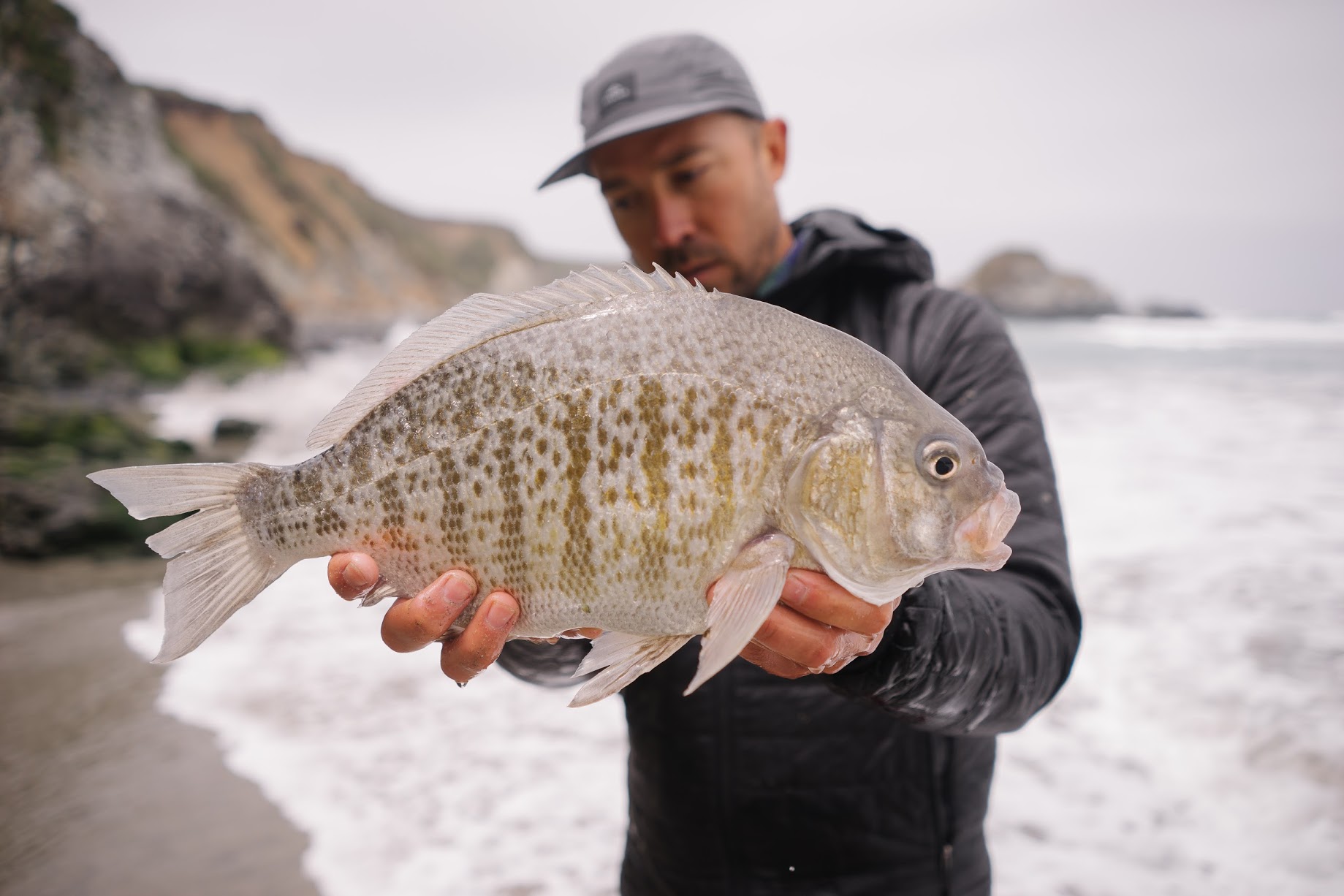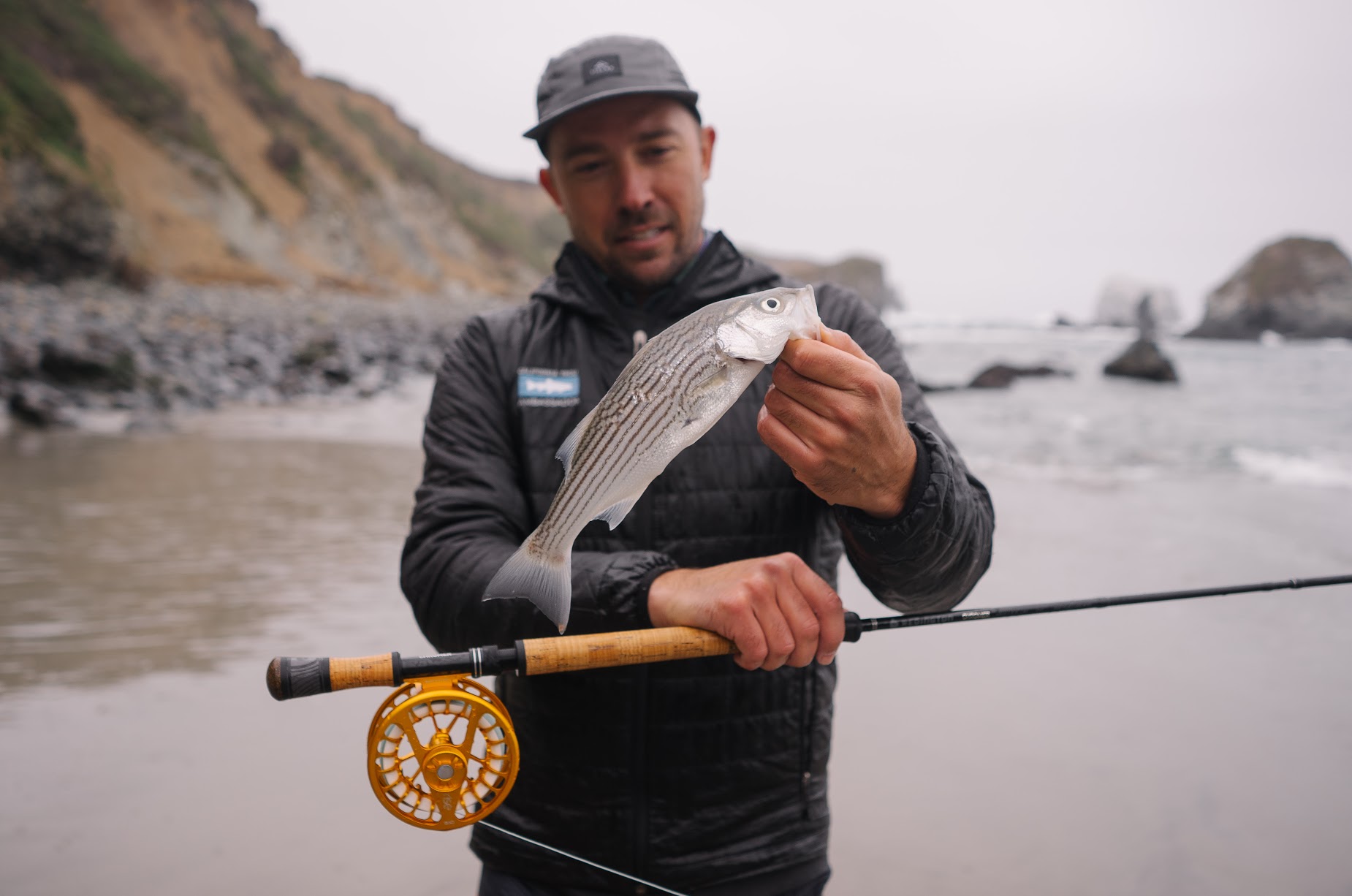Lately, I've been getting a lot of questions about surf fishing. I've posted a few photos from some recent trips and have run into a few toads in the process of learning how to fish the surf. I have to admit though, I'm not an expert when it comes to this style of fishing, not even close. Most of the time I'm out there fumbling through the process, learning as I go. I get skunked a lot too!
With that said, I have learned a few thing about fishing the tidal zone this year. The gear matters quite a bit, as does your ability to read the water. So...when you head out, learn from my mistakes!
Rod, reel and line:
This one's pretty important in my opinion. I started by taking out my regular 7wt rod, the one I use for Steelhead from time to time. It worked alright, but it had some pretty major limitations.
I currently use an 11'6" Redington Chromer (6wt) which gives me the few extra inches I need to make longer casts and get over any waves coming my way. I've paired that with a Redington Rise reel which can take a beating in the surf. With a quick rinse after being immersed in salt water, it's ready to head out for the next trip. This is the exact same rod and reel I use for stripping flies on Pyramid lake too.
The last element of the rig that's really important is line choice. I've used a few different lines and sink tips with varying success. The line that's brought be the best luck has been the Rio InTouch Outbound. It's the line with the Striper on the box, so it's got to be good right? This line shoots well, especially paired with the Chromer, getting you the extra distance you'll need for the surf. Most importantly it gets down quick, even in saltwater or faster currents.
Flies:
Surprisingly, I keep this one really simple. My surf box is NOTHING like my trout boxes. When I'm trying to come tight on a big perch or some striped bass, I stick with three patters. For perch, anything orange. I tie a lot of my own flies and I usually just use some lead eyes, buck tail, and marabou. If it's orange, it will get the job done. I'm sure there are a lot of great flies to use in the surf but this is a good starting point.
I also use a good old-fashioned clouser or deceiver. Basically, any solid bait fish pattern will work just fine.
Typically, I'll run a two fly rig in order to cover the bass and perch at the same time but you can easily stick with one fly and be just fine.
Clothing/Waders:
When I first started fly fishing in the surf, I wore my waders every time. I've been using the Sonic Pro HD Waders by Redington. These things are really great and I use them for still water and trout fishing year-round. The one drawback to the waders, is that sand finds its way into your boots really quickly and you may have to empty them out from time to time. If you have waders with integrated boots, those will work better.
I've also had success with using a pair of simple board shorts. If you're not afraid of getting a little wet, this allows you to take a few more "risks" in the waves without the fear of filling your waders with salt water. Most Northern California beaches can be a little chilly to use this tactic though.
My current approach has me using a wetsuit. Yeah, that's right, a wetsuit. I've been able to get substantially more aggressive in the surf with a wetsuit. Instead of getting knee-deep and watching for waves with a nervous eye, the wetsuit allows me to get waist-deep (or deeper) and just jump over the waves when they come in. If a bigger set rolls through, I can just duck dive and come out the other end unscathed. It sounds a little silly but I've had some of my best days using a wetsuit!
The one drawback to using the wetsuit is that I don't have any storage for flies, my camera, or any other gear I might need. This problem can be solved pretty easily with a dry bag that you leave on the beach. I use the Tillak Dry Bag. Not only does this bag fit just the right amount of gear, the company gives back to conservation organizations in some serious ways!
Reading Water:
This one took me awhile! I'm sure you'll figure it out more quickly than I did. Once you get the details down, your catch rate will go through the roof!
If I can, I start by getting a high vantage point to see as much of the beach as I can. This gives me the opportunity to see any deeper sections or cuts in the beach that fish, or bait, might be holding in. What you'll be looking for is a section where a wave crashes, then flattens out before hitting the shore. The area where the wave flattens out is usually a pocket of deeper water. Spend as much time as you can fishing the buckets and troughs. That's where the fish will stack up on a high tide.
You can also look for current seams taking sand from the beach out into the waves. This typically means there's some bait (usually sand crabs) being pushed out to sea too. When you find the bait, you'll find the fish!
Another thing that's worked well for me is just flat out covering water, especially if you're on a bigger beach. In my experience, the fish usually pile up in more concentrated areas and will hit a fly properly swung/stripped through their zone in the first few casts. So...if you haven't been hit, move on to the next likely holding water.
Like I said, I'm no expert when it comes to surf fishing. The few things I've learned have been through lots and lots of trial and error. You've got to be patient and persistent and the best way to get into some good fish is to put in time on the water! If you're just getting started, Lost Coast Outfitters is a great local shop to pick up the right rod, reel, lines, and flies. George and the boys down at LCO will get you on the right track for some fun in the surf!







